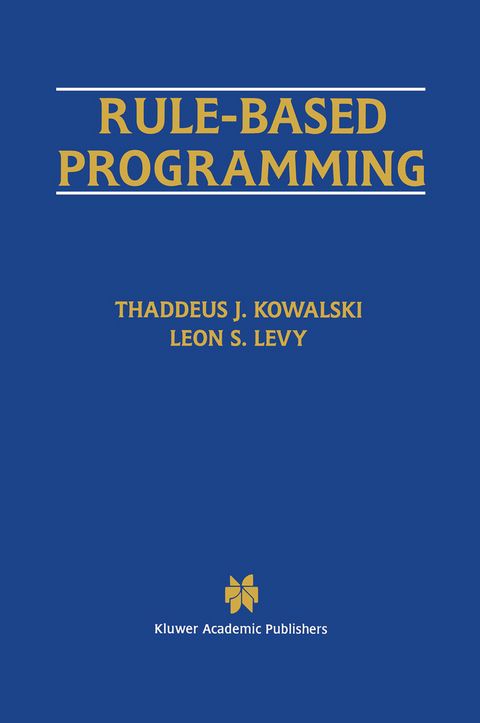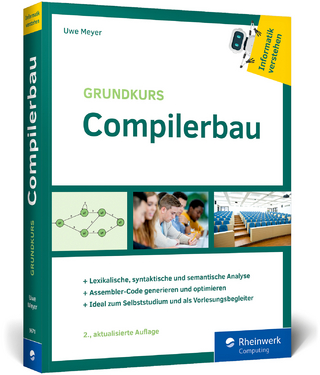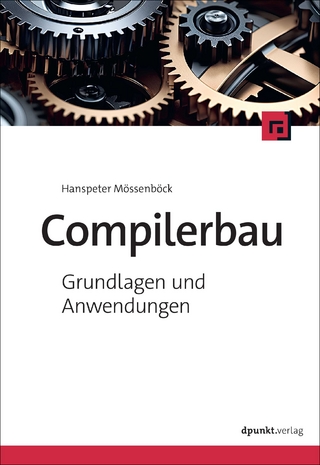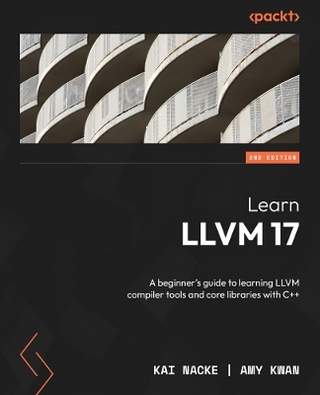
Rule-Based Programming
Springer (Verlag)
978-0-7923-9769-4 (ISBN)
Rule-based programming is also helpful in bridging the semantic gap between an application and a program, allowing domain specialists to understand programs and participate more closely in their development.
Over sixty programs are presented and all programs are available from an ftp site. Many of these programs are presented in several versions allowing the reader to see how realistic programs are elaborated from `back of envelope' models. Metaprogramming is also presented as a technique for bridging the `semantic gap'.
Rule-Based Programming will be of interest to programmers, systems analysts and other developers of expert systems as well as to researchers and practitioners in artificial intelligence, computer science professionals and educators.
Getting Started in Rule-Based Programming.- Caveat.- C5.- Summary.- Old Friends Revisited.- The Euclidean Algorithm.- Fibonacci Sequence — Iterative.- Fibonacci Sequence — Recursive.- Towers of Hanoi.- Transitive Closure.- Summary.- Search and Backtracking.- Depth First Search.- Problems as Graphs.- Generate and Test.- Backtracking.- Generators.- Summary.- Ai Paradigms.- Proofs.- Forward Chaining Proofs.- Backward Chaining Proofs.- How and Why.- The System as a Shell.- Embedding-Frames.- The Dijkstra-Lee Program.- Semantic Nets and Conceptual Graphs.- Frames.- Converting Semantic Nets to Frames.- Object Oriented Programming.- Summary.- Language Processing.- Semi-Thue Systems.- Metaprogramming.- Context -Free Grammars.- Tree Evaluation — Synthesized Attributes.- Tree Evaluation — Inherited Attributes.- Tree Grammars.- Summary.- Parts of Prolog and Lisp.- Database Retrieval.- Simple User Interfacing.- State Machine Simulation.- Symbolic Simplification.- Symbolic Differentiation.- Programming in the Large.- Summary.- Machine Learning.- Classification.- Generating Abstractions.- Locating a New Object in a Hierarchy.- The Complete Learning Demonstration Module.- Summary.- References.- Appendix — Quick Reference on C5-R2.0.
| Reihe/Serie | The Springer International Series in Engineering and Computer Science ; 369 |
|---|---|
| Zusatzinfo | XVI, 306 p. |
| Verlagsort | Dordrecht |
| Sprache | englisch |
| Maße | 155 x 235 mm |
| Themenwelt | Mathematik / Informatik ► Informatik ► Programmiersprachen / -werkzeuge |
| Mathematik / Informatik ► Informatik ► Software Entwicklung | |
| Informatik ► Theorie / Studium ► Compilerbau | |
| Informatik ► Theorie / Studium ► Künstliche Intelligenz / Robotik | |
| ISBN-10 | 0-7923-9769-X / 079239769X |
| ISBN-13 | 978-0-7923-9769-4 / 9780792397694 |
| Zustand | Neuware |
| Haben Sie eine Frage zum Produkt? |
aus dem Bereich


